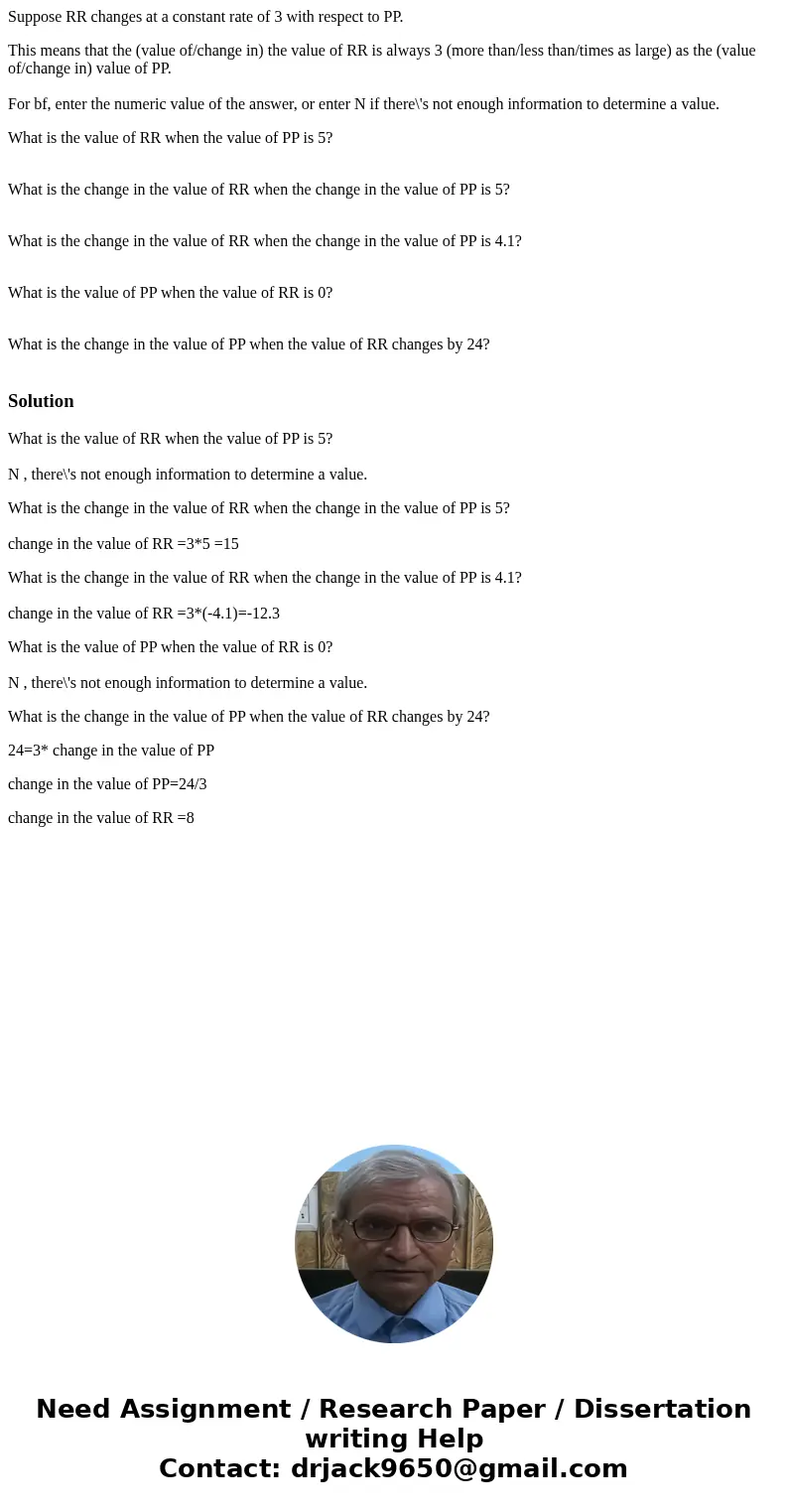Suppose RR changes at a constant rate of 3 with respect to P
Suppose RR changes at a constant rate of 3 with respect to PP.
This means that the (value of/change in) the value of RR is always 3 (more than/less than/times as large) as the (value of/change in) value of PP.
For bf, enter the numeric value of the answer, or enter N if there\'s not enough information to determine a value.
What is the value of RR when the value of PP is 5?
What is the change in the value of RR when the change in the value of PP is 5?
What is the change in the value of RR when the change in the value of PP is 4.1?
What is the value of PP when the value of RR is 0?
What is the change in the value of PP when the value of RR changes by 24?
Solution
What is the value of RR when the value of PP is 5?
N , there\'s not enough information to determine a value.
What is the change in the value of RR when the change in the value of PP is 5?
change in the value of RR =3*5 =15
What is the change in the value of RR when the change in the value of PP is 4.1?
change in the value of RR =3*(-4.1)=-12.3
What is the value of PP when the value of RR is 0?
N , there\'s not enough information to determine a value.
What is the change in the value of PP when the value of RR changes by 24?
24=3* change in the value of PP
change in the value of PP=24/3
change in the value of RR =8

 Homework Sourse
Homework Sourse